It opened on Nov. 26, 2022 at the EmotionHall in Gorizia, Italy’s first permanent immersive arena, part of a shopping mall, the immersive, multisensory exhibition Gustav Klimt. Symphony of Immersive Art dedicated to the master of the Viennese Secession. We asked a few questions to Stefano Fomasi, aka Stefano Fake, who was in charge of directing the project, about how an immersive exhibition is made and what elements most excite the audience, the role of sound to accompany the images, and what the innovative element of this multisensory show dedicated to Klimt consists of. It will be on view until April 30, 2023. The interview is by Ilaria Baratta.

IB. EmotionHall is Italy’s first permanent immersive arena about 2,000 square meters large modular and interactive. Gustav Klimt. Symphony of Immersive Art is therefore set in a place created specifically to host immersive exhibitions. How important do you think, then, is the space in which an immersive exhibition is held?
SF. Immersive art experiences are characterized by being built with five elements that must have the same balance in the final result: space, light, audiovisual dramaturgy, music and, last but not least, the presence of the viewers. We call them “containers of emotions.” So the arrangement of the environment is crucial to create a path for the audience to enter and experience art firsthand. When we designed EmotionHall in 2019, opening with my Van Gogh Immersive Art Experience, we started precisely from the study of the space, with different areas dedicated to different and modular installations. The public has always wanted to be surprised and amazed, not just educated. The museums of the future will necessarily have to be more engaging and tell stories with different languages, to stimulate the public intellectually but also sensory.
In Gustav Klimt. Symphony of Immersive Art ,will the visitor find himself immersed only in Klimt’s so-called iconic works or also in lesser-known ones or in images not so closely related to the artist?
The storytelling of the immersive experience on Klimt allows visitors to learn about all aspects related to his production. We see his evolution as an artist: The early Symbolist period with the frescoes in the Burgtheater, the drawings to illustrate the secessionist magazine Ver Sacrum, The Great Beethoven Frieze inside the Palace of Secession, The Golden Period with iconic works such as Judith and the portrait of Adele Bloch-Bauer, The Tree of Life designed for the Stoclet Palace in Brussels, iconic works such as The Kiss and Danae, female portraits, and the last period in which he uses the entire color palette to an extreme, the so-called flowery period. It is a very comprehensive experience that acquaints one with Klimt’s art in all its power.
By what criteria is certain music chosen to go with a certain work? From the choice of the title, Symphony of Immersive Art, an important role is given to sound...
Music in late 19th-century Vienna is central to understanding the historical period in which Gustav Klimt lived. Music is absolutely studied and used to add meaning and significance to the viewing of the works. To give an example: when the Beethoven Frieze was inaugurated at the Secession Palace, the great composer Gustav Mahler, a great friend of Klimt’s, conducted Beethoven’s Symphony No. 9, the famous Ode to Joy, for the occasion. So we throughout that scene play that very piece, to take the audience back in time and transport them to the sensory dimension that the Austrian spectators had experienced at that time. Technology and audiovisual dramaturgy allow us to create just this kind of synaesthetic atmosphere among all the arts.
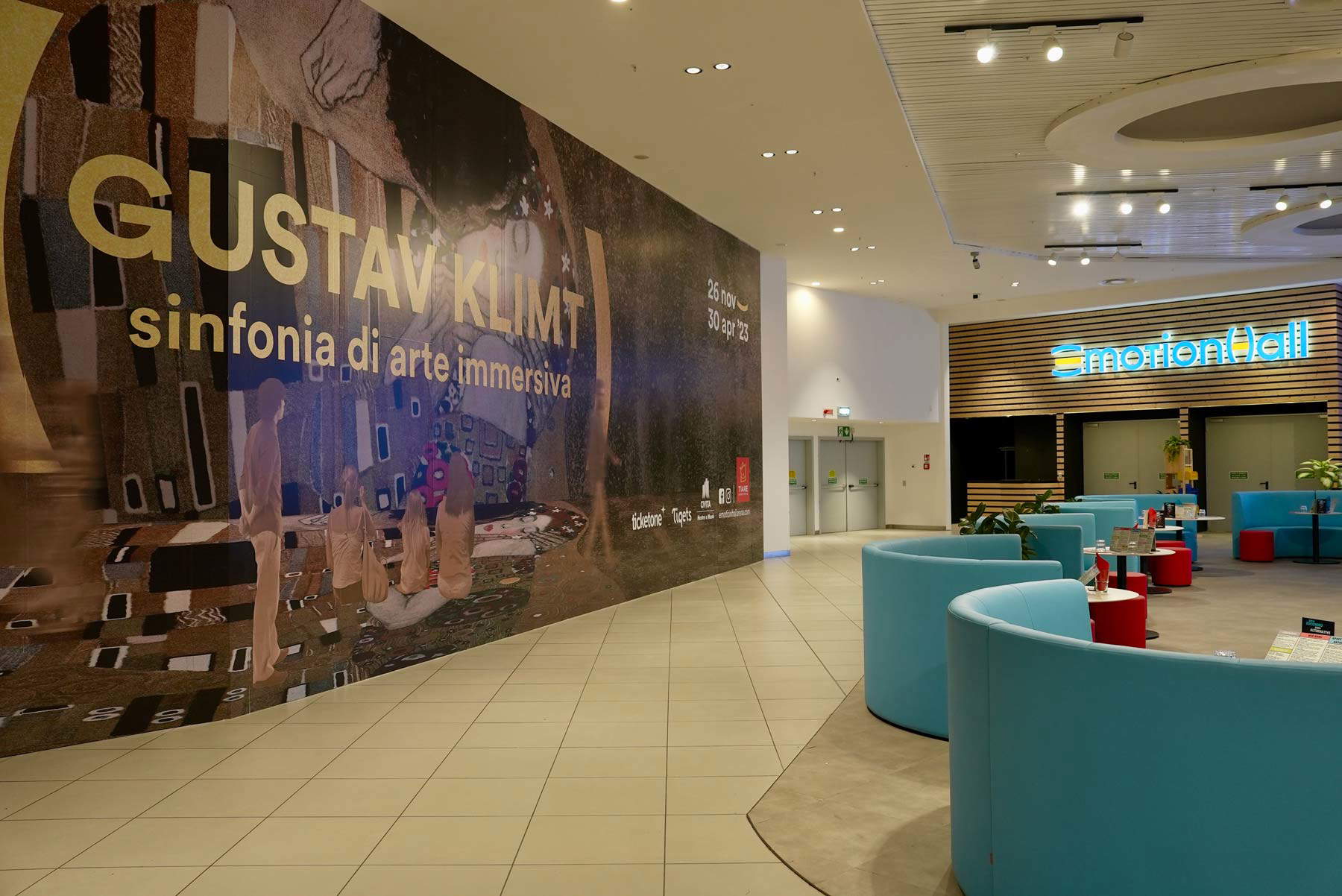
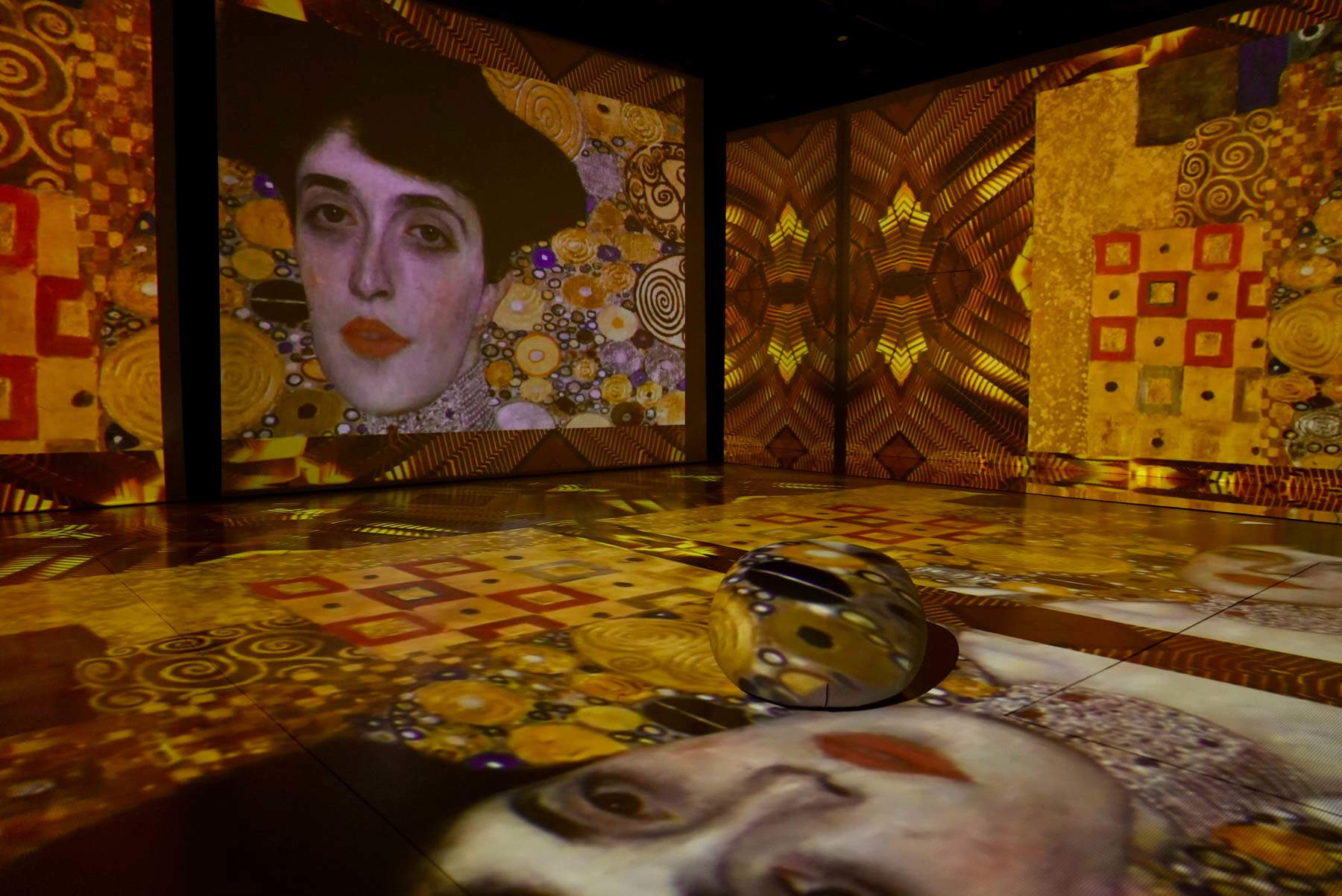

What do you think is the goal of an immersive exhibition and what are the elements that most capture and excite the audience in this context?
As with all exhibitions, the fact of being able to create interest, knowledge, emotion and wonder applies. The goals are no different from traditional exhibitions, but we now-with the great global success of immersive art experiences-have helped shift the exhibition paradigm by putting the viewer’s experience at the center, to try to actively engage them in the discovery of art. It applies to both educated audiences and those approaching art for the first time.
EmotionHall is inserted in a shopping mall, a place frequented by all kinds of audiences and especially unconventional for an exhibition: so do you think an immersive exhibition is potentially more attended than an exhibition set up in a museum venue?
In the last fifteen years I have done more than seventy immersive exhibitions, all over the world and in different contexts. I must say that I have not noticed much difference in audience attendance. The important thing is to keep the quality level of the exhibitions high. This one of Klimt at EmotionHall could easily be hosted at the Palazzo delle Esposizioni in Rome, where I did Caravaggio Experience in 2016 with more than 75,000 viewers. The trend of placing art in “unusual” contexts is driven by the need for people and families to experience and share meaningful moments, and there is nothing more meaningful than the discovery of culture and art. It is an unstoppable global trend. Think of Las Vegas or Dubai, which 20 years ago were just entertainment centers. Today they offer concerts, exhibitions and art installations of the highest caliber. Offering only shopping and entertainment is no longer enough, because people are also looking for more. Seeing people of all ages get excited inside our installations is the best way to understand that we are on the right track in engaging unconventional audiences who are approaching art for the first time.
How long does the immersive experience last and what does the interactivity consist of?
The tour is divided into several rooms: a room with a kinetic light art work, an interactive corridor dedicated to gold, an area with some reproductions of Klimt’s paintings with short educational texts, a magical installation with a dance of windblown cloths, a large immersive room in which one can see the twenty-minute audiovisual symphony on Klimt’s pictorial evolution, and finally the Immersive Mirror Room, inside which one is literally immersed in the color gold in an infinite space. Visiting the entire exhibition takes about an hour, but we give the public the freedom to stay in the exhibition space as long as they wish, to review and interact with the installations as much as they see fit in order to fully enjoy the art experience.
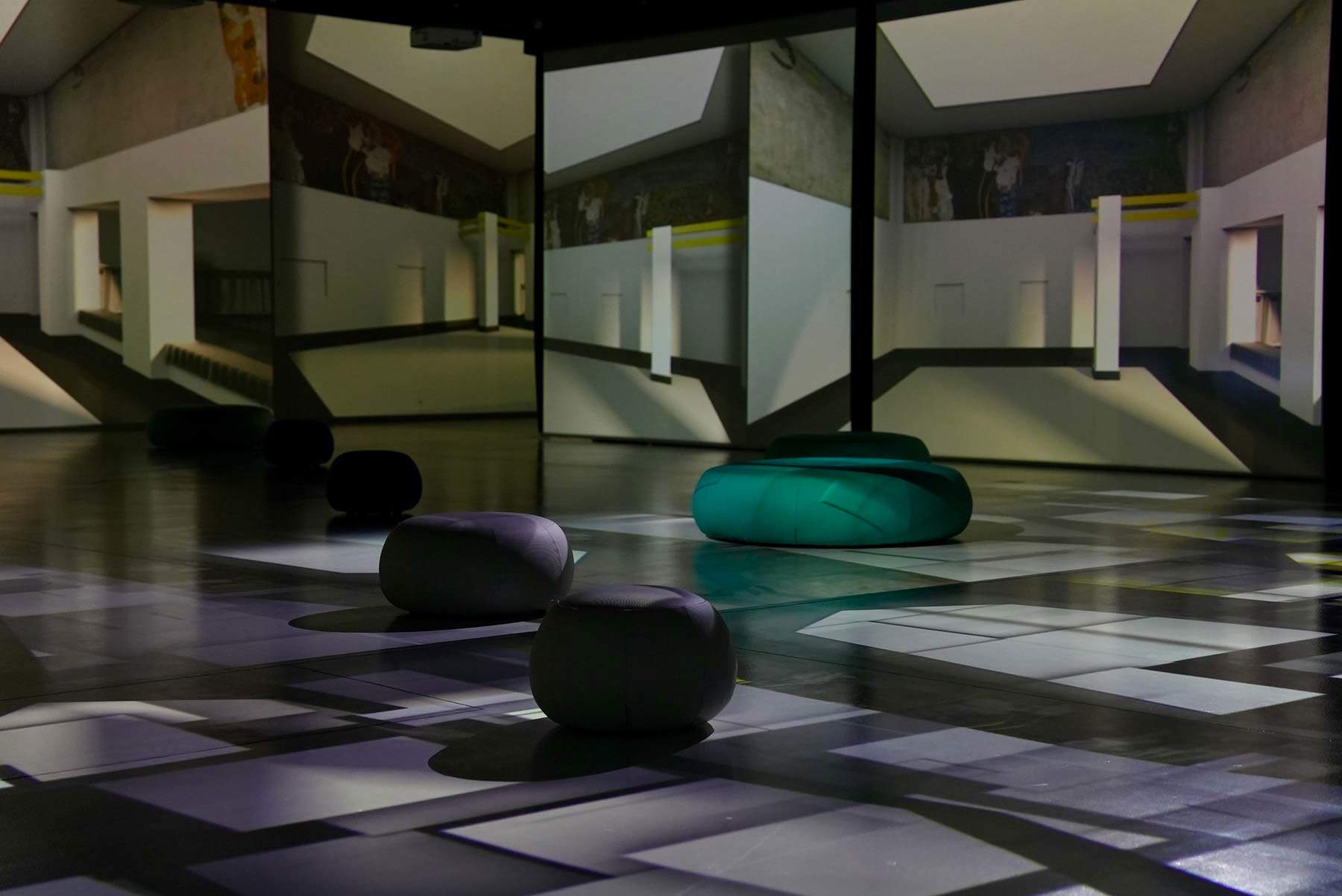
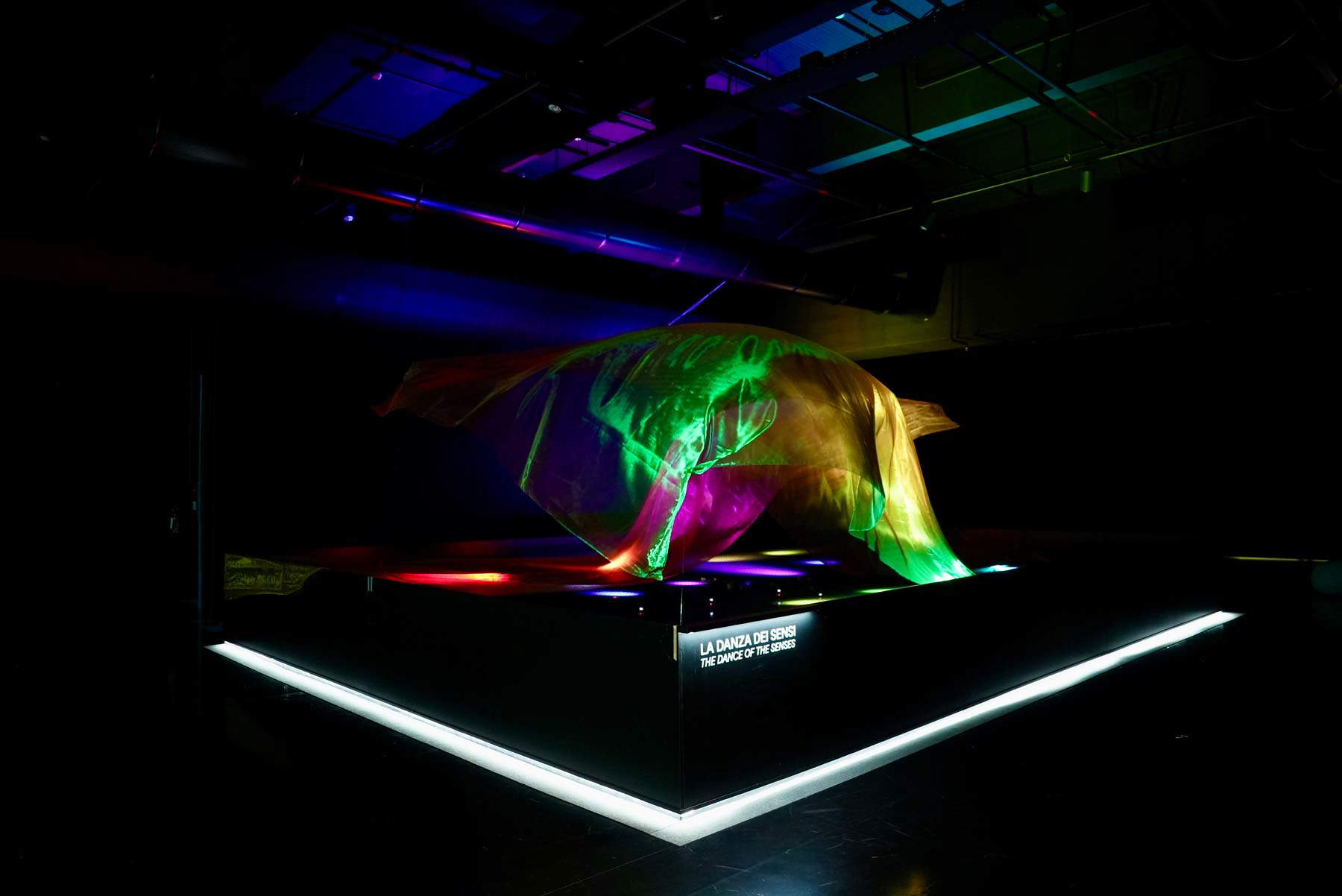 The
The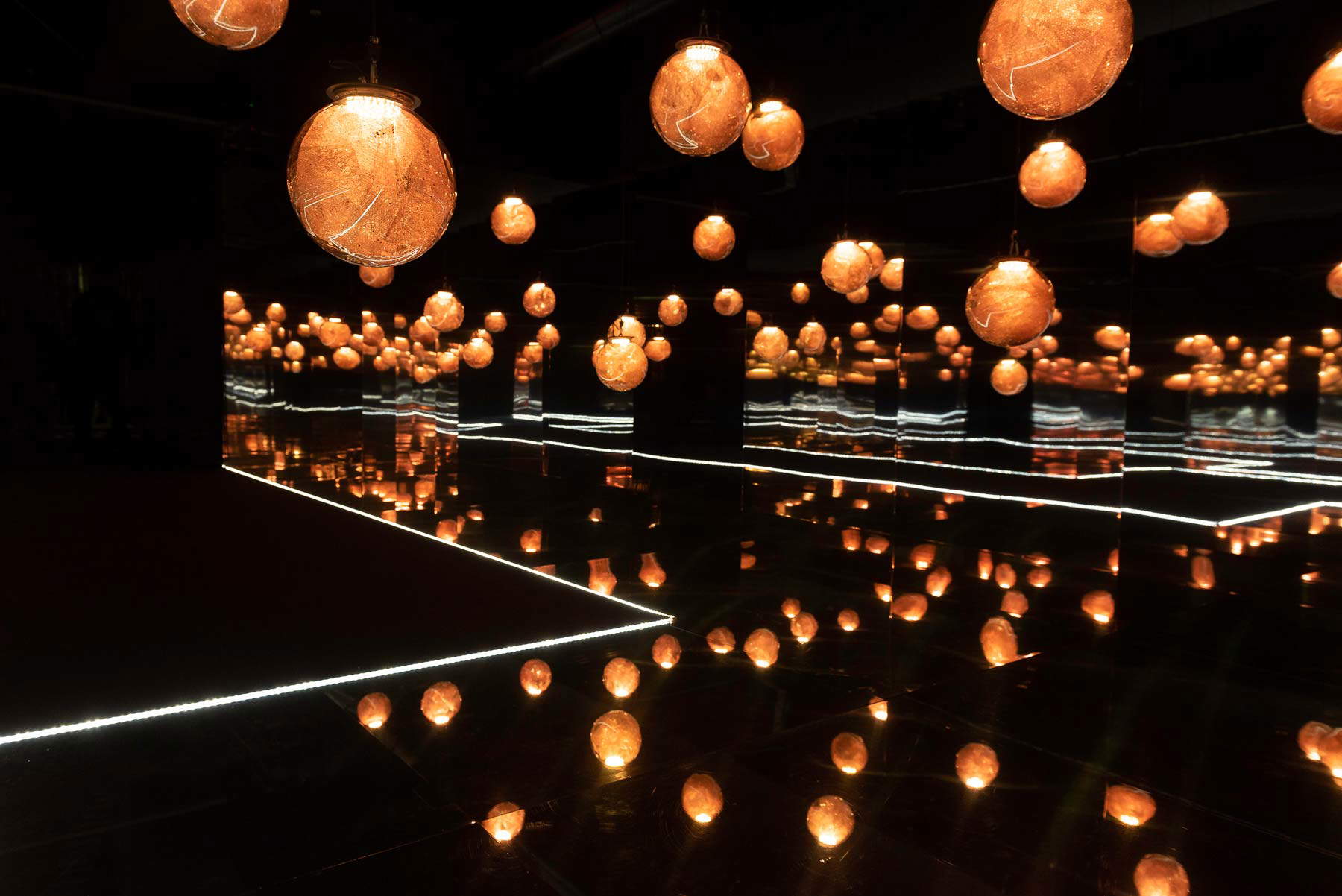 The Gorizia
The GoriziaOften art historians are reticent about immersive exhibitions because they believe that seeing the works live is not the same as seeing reproduced images of the works. Where does the innovative element ofGustav Klimt. Symphony of immersive art?
These are controversies that we have already overcome in past years. I’m not sure what their reticence was dictated by, but they were almost surreal criticisms, from my point of view. Just imagine a musicologist objecting to music played from a home stereo because “only with a live orchestra can you understand Beethoven,” or a theater critic making criticism of cinema because “there are no live actors” in the theater. I have always thought and said in various lectures on the subject that traditional exhibitions and immersive exhibitions are two completely different experiences, and neither excludes the other. What is quite certain is that if you take an eight-year-old child to a traditional museum after half an hour they will want to leave, whereas in digital experiences they discover art in a much more immersive way.
How is an immersive exhibition created and implemented?
It is a very long process that takes months of study and planning. You have to come to tell the art of the past with the eyes and technological tools of the contemporary world and take into account the compositional elements of an immersive art experience: space, light, audiovisual dramaturgy, music and, last but not least, the way the audience will experience it. It is an alchemy of all these elements.
In your experience, is there a good understanding between pictorial art and new technologies? Will the future in your opinion go more and more in this direction?
The future I really cannot predict. But it will certainly be made by the things that we authors and producers know how to bring, with the perseverance, seriousness, creativity and passion that every successful thing requires.
Warning: the translation into English of the original Italian article was created using automatic tools. We undertake to review all articles, but we do not guarantee the total absence of inaccuracies in the translation due to the program. You can find the original by clicking on the ITA button. If you find any mistake,please contact us.